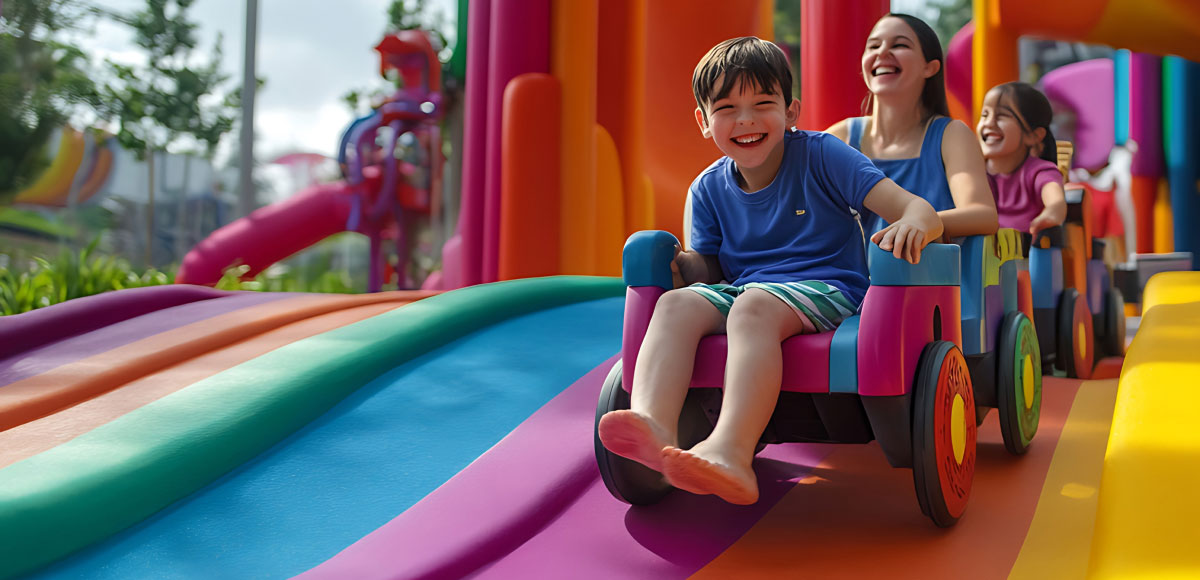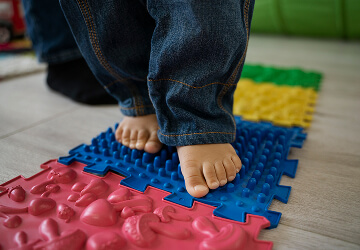By Rima Gandhi, M.S., OTR/L (Owner of Inclusive Spaces, LLC)
Sensory Integration Promoted by Sensory Calming Spaces
Sensory Processing or Sensory Integration is a complex neurobiological process in which sensory information is effectively perceived, registered, and integrated by the body and the brain for functional behavior. To put simply, sensory processing is the ability to integrate and respond to sensory input in a meaningful and consistent manner. Read More Here
When the sensory system is under or over-responsive to stimuli, it becomes disorganized and sensory dysregulation is seen. A detailed individualized sensory integration (SI) assessment and therapy by an SI occupational therapist may be warranted and should be sought out for individual needs. However, by understanding basic principles of sensory integration, actionable strategies can be adopted into your educational, home, and/or business to make it an inclusive space for all types of children.
Our 8 Senses
As most of us have learned, we have 5 senses (sight, hearing, taste, smell, and touch). However, as occupational therapists and in terms of sensory integration/processing, we also include 3 more very important senses – Proprioception (body position/movement), Vestibular (balance), and Interoception (Internal body signals).
- Proprioception – It is an input felt within your joints giving the body an understanding of its position and movements. Example – you know you are sitting on a chair even with your eyes closed. This is because of your proprioceptive system! As Occupational Therapists we know that by providing proprioceptive input to the body, it will elicit calm and increase sensory regulation. We like to provide this input through “heavy work” activities! Read More: Proprioceptive Processing
- Vestibular – It is a system found within your inner ear which gives your brain an understanding of the body’s balance and its head position. Example – Sliding down a slide. Generally, as Occupational Therapists we recommend slow rhythmical linear movement rather than fast rotary movement for calming and sensory regulation. Read More: Vestibular Processing
- Interoception – The interoceptive system is responsible for helping us sense and understand our internal body states—like hunger, thirst, temperature, and even emotions. For children with interoceptive challenges, recognizing these internal cues can be difficult, leading to confusion, anxiety, or difficulty self-regulating. Read More: Interoceptive Processing
General Strategies for Creating Sensory Calming Spaces
Using the basic principles of Sensory Integration, below are activities and strategies that can be integrating for overall well-being and calm:
A. Promote the use of proprioceptive input “heavy work” exercises/ activities:
In Schools:
-
- Heavy lifting: ie. Carrying heavy books
- Providing crunchy snacks (ie. carrots, pretzels)
- Weight bearing activities – ie. writing/drawing with paper on the ground, erasing writing on a board, animal crawls for movement break, chair/wall push-ups
- Providing weighted items to carry in hands or in a bookbag during transitions
At Home:
-
- Exercises that promote joint compression (ie. weights)
- Helping with carrying heavy things – ie. laundry baskets, putting away books, putting away pots/pans from the dishwasher, carrying in groceries
- Push/pull activities/games – ie. vacuuming, lawnmowing
- Doing animal walks
- Use of weighted items – blankets, lap pads, weighted stuffed animals
B. Promote use of Vestibular Input that use linear (back and forth) NOT rotary (spinning) input for activities/exercises
In Schools:
-
- Flexible seating – rocking chair, rocking/side to side on a therapy ball, hammocks, wobble disc
- Exercises or movement breaks (ie. Go Noodle) – that encourage swaying, back and forth movement as opposed to fast spinning movements
- Movement breaks – swings, slides, scooter boards – Make a linear vestibular circuit of playground activities!
- Creating a sensory “circuit/walk” in the hallway or the classroom
- Skipping, slow jogging
At Home:
-
- Swinging – linear (back and forth) movement not spinning
- Incorporating log rolling into activities
- Jumping on a trampoline with a purpose (ie. jumping to a beat, jumping and catching a ball)
- Obstacle course with movement stations
C. Help children tune into their own internal signals (Interoceptive input)
At School:
-
- Mindfulness activities
- Body Scan Exercises
- Guided imagery or relaxation stories
- Deep breathing/calming techniques
- Provide structured and predictable times for food, bathroom breaks, movement
At Home:
-
- Provide structured and predictable routines
- Use of cue and visual cards for basic needs
- Sensory diet to provide regulation of other sensory systems
- Emotion regulation systems (ie. mood charts)
A sensory calming space is more than just a quiet room—it’s a sanctuary where children with sensory processing challenges can regain control, decompress, and find comfort in a world that sometimes feels too overwhelming. By thoughtfully considering sensory inputs like lighting, textures, sound, and movement, you can create a space that meets the child’s needs and supports their well-being. Remember, every child is unique, so tailoring the space to their individual preferences will help them feel safe, calm, and empowered.

*Individual needs should consult with an Sensory Integration Occupational Therapist for individualized plans
© 2025 Inclusive Spaces, LLC
www.inclusivespacesOT.com
